Exhibition and guided tour
12 December 2014–4 January 2015
Artists: Bariş B. Atal (Turkey), Avgust Černigoj, Beli sladoled / White ice cream (Miha Perne & Leon Zuodar), Neža Jurman, Miha Perne, Leon Zuodar (Slovenia)
Curators: Saša Nabergoj, Simona Žvanut
Assistants: Nina Jesih, Zala Kurinčič
Opening: Friday, 12 December 2014, at 8 pm
Preview with the artists and curators:
Friday, 12 December 2014, at 7 pm
Guided tour with the curators:
Tuesday, 23 December 2014, at 6 pm
venue: Škuc Gallery, Stari trg 21, Ljubljana
Avgust Černigoj, untitled, 1978, felt-tip pen on paper, 30.1 x 22.2 cm
(original kept by the Avgust Černigoj Gallery at Lipica Stud Farm).
Day by Day focuses on the exploration of drawing in the form of a diary entry, drawing that is therefore produced in a more or less organized sequence and records daily impressions, ideas, memories or flow of thoughts. The drawings have been produced in different situations (the hustle and bustle of the daily life of a 4-million Turkish city, the domesticity of the early morning ritual of drinking tea, the hospital and rehabilitation centre ...), on various supports (from receipts, diaries, scraps of paper of different sizes and colours, rolls of paper ... ), during different times (the most recent stem from the time of preparing the exhibition, the oldest date from the mid-1970s). The drawings thus compose a cacophonic image of the personal and public worlds of the five participating artists, which even intertwine with one another from time to time.
The Beli sladoled (White ice cream) art duo is showing their piece Don't Look Back (2012), a 21 metres-long drawing that was the result of their one month long drawing action, which is actually an experimental test of a different, new way of collaborating. Instead of their established joint creative process, the artists set themselves the task of “a long-distance collaboration”. Like writing a diary entry, they decided to make a drawing every day at a certain time, each in their own home and on their own roll of paper, without looking back. They then proceeded to bring the rolls into the gallery, unravelled them together, attached them to the wall, only to be surprised by the finding that the two drawings were actually of the same length. In such a way the contemporary frieze speaks of individual art practices that intertwine in terms of working style and form, as well as topic. In this, as well as in their other, more or less, joint works, a sense of paradox is in the forefront, as well as a mocking sense of humour, self-irony, a dense and playful iconography of contemporary society, witty and meaningful comments, and fluid and precise drawing.
Avgust Černigoj, untitled, 1978, felt-tip pen on paper, 31 x 23.4 cm
(original kept by the Avgust Černigoj Gallery at Lipica Stud Farm).
The works 8 O'Clock Drawings and 10 O'Clock Drawings by Leon Zuodar are a series of drawings, which the artist has been making since 2010 every morning with his first cup of tea; initially at 10 am, before the time moved to 8 am over the years (the older we get, the earlier we get up). These are drawings with different motifs, since they note a variety of objects around him – the view through the window, humorous and self-ironic musings with an emphasis on the figurative, or totally abstract drawings that spring from the currents of the subconscious and automated drawing action.
With his series Serious Research of Nonsense (since 2009), Miha Perne is exhibiting drawings that are created spontaneously every day during the course of the entire day. Moreover, he must steal time for them, because he never really knows when he will actually have the time. As a father of two young children, he (also) makes drawings during the tiny stolen moments of family life (as the children watch a cartoon or take a bath, for instance). He is also required to make many a drawing according to their wishes, and sometimes even forgets a half-done drawing on the kitchen table, which the children promptly complete themselves. His drawings have therefore never meant to be “serious” in the sense of a predetermined motif or intent like his other painted and drawn works, which he works on in a very systematic way. The Serious Research of Nonsense drawings are produced in response to his daily events, but more than that, they adapt to him and “force” the artist to work outside the established frameworks. And this is usually before morning coffee … a considerable number of the exhibited drawings have actually been produced whilst waiting for the water to boil ...
Avgust Černigoj, the founder of Slovenian constructivism and the most prominent representative of the historical avant-garde in Slovenia, is presented with an almost unknown series of drawings (1977–1979). A serious traffic accident in 1975 chained him to the beds of the hospitals in Sežana and Valdoltra for several months, where he drew the daily hospital life in order to relieve his boredom. This is how the series of twenty drawings (a selection of ten will be exhibited) was created, in which various objects and medical instruments appear as equals to the human figure: wheelchairs, crutches, splints, physiotherapy devices, etc. Featuring a strong contour and a simple line, the drawings resemble comic strips and have a distinctly contemporary air to them.
Bariş B. Atal is a Turkish artist of the younger generation, who is taking part in the exhibition (his first international show abroad) with his drawings. The Turkish notion of time is different to our own, as we increasingly see time as a precious resource – which is why we try to organize ourselves as efficiently as possible, in public as well as in private life. In Turkey, already the understanding of a timetable as such is much more flexible and indefinite ... giving rise to a lot of waiting. In offices, at the doctor’s, on the bus (in rush hour), in the shop, in college, in meetings. In such a way, Bariş B. Atal started to regularly record his frequent waiting at different places and at different times by adding drawings besides the notes, ideas and sketches in his notebooks. He does this by (always) drawing just his feet and the ground, annotating the drawings with a few brief comments in Turkish. This is how three notebooks of drawings have been produced since 2013 that follow his daily life, whereas by identifying the ground (the mosque, the market, the concrete ground...) we may also decipher certain fragments of Turkish culture. After being invited to take part in the show, the artist began to make a fourth notebook following the same principle, in which, however, English instead of Turkish notes began to appear – like in his everyday life as he was spending a considerable amount of time communicating with us and the other artists about the preparations for the show. Particularly with Neža Jurman, also an artist of the younger generation. As curators, we invited them to take on a very special collaboration: a joint piece. Namely, we recognized a similar principle in their work, which is reflected in an intensive daily drawing production, experimentation with drawing as a medium, as well as a quest (and invention) of new modes of operation within the art system. Their dialogue began in the virtual world and continues during Bariş’s two-week residency in Ljubljana before the exhibition. The presented work will be the result of the intertwining of their practices and personal dialogue: a diary entry of their common everyday.
At the same, we invited Neža Jurman to start a new production, which will be an expression of her communication with the starting point of the exhibition and the selected works of the other artists. She will create a unique situation in the back room of the gallery. Before the exhibition, the space will predominantly be used for working together with Barış, and will be a kind of crossover between a space of production and presentation, whereas afterwards she will implement constant changes to the exhibited artwork throughout the duration of the exhibition. Day after day she will continue to work with the installation by adding or taking something away, thus using the time component to further highlighting the recording of daily life in diary form – something that the exhibition at hand sets to the fore in its various ways and formats.
A catalogue in the form of a zine will also be produced to accompany the exhibition, which will be prepared jointly by Leon Zuodar and Neža Jurman under the auspices of the book production of Beli sladoled (White ice cream).
Saša Nabergoj and Simona Žvanut
Production:
SCCA–Ljubljana, Center for Contemporary Arts / World of Art, School for Curators and Critics of Contemporary Art; Co-Production: Škuc Gallery
Supported by: Ljubljana Municipality, Department for Culture, Ministry of Culture of Republic of Slovenia, European Cultural Foundation, Lipica Stud Farm (www.lipica.org), National Gallery of Slovenia, Turkish Embassy in Ljubljana, Turkish Airlines, Embassy of the Republic of Slovenia in Ankara
.-.-.-.-.-.-
more at: http://www.scca-ljubljana.si/news-en_14-43.htm

















































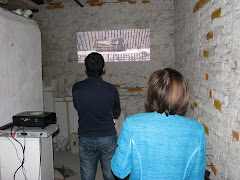














![exi[s]t>15 bulart](https://blogger.googleusercontent.com/img/b/R29vZ2xl/AVvXsEj67mt21mvAFC3VF_3QGzADB-5ZJJLBOlefD6Y8pi5z2e6HTMZztaHCi08vSOJ39mER-PcUmXUyHBnc-dMAq1t6MQe8reeNnIkyGKauFhd88y3NSvcsTLRlB1EdJQrefHryZQxK6-eDTvM/s240/buffet.jpg)
![exi[s]t>15 bulart](https://blogger.googleusercontent.com/img/b/R29vZ2xl/AVvXsEjuEe0w0gLW9nkOXAPGHqtkn89laZeWaQoLwvH2WVTEinKMw5RfqWwzcAkl1Ep27R6j1aYRF4BkiMX_juuZnGDNHyoHRCd65KHsXMg_Z_a3-tLG4OpCSHOlsj5hsPsh_htA6DEegu-Ubic/s240/P8250003.jpg)
![exi[s]t >15 bulart](https://blogger.googleusercontent.com/img/b/R29vZ2xl/AVvXsEg_O-oTzQ29LIVymZGSJUzpJCQYiu6VEztB6VkUPJmKb2VN5bRGpbURyj3-2M3Zz5JGtRjgwY_tr4qC-K21d5pKAzHZn9gYhbw2Vk7CPxb5unRin_828kpxYnzJbDa2Gkx6U1PFw2q1NDI/s150/P8250077.jpg)





















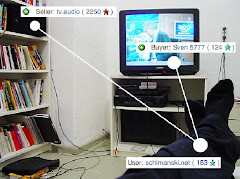














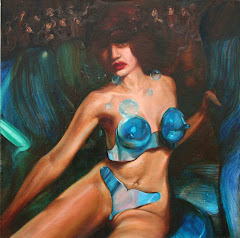
















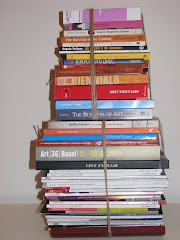




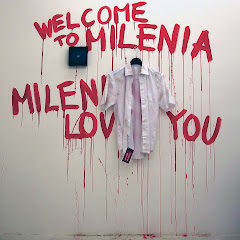

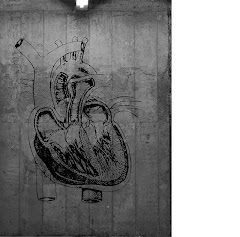







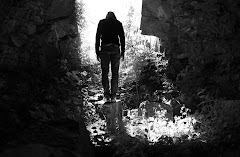



No comments:
Post a Comment